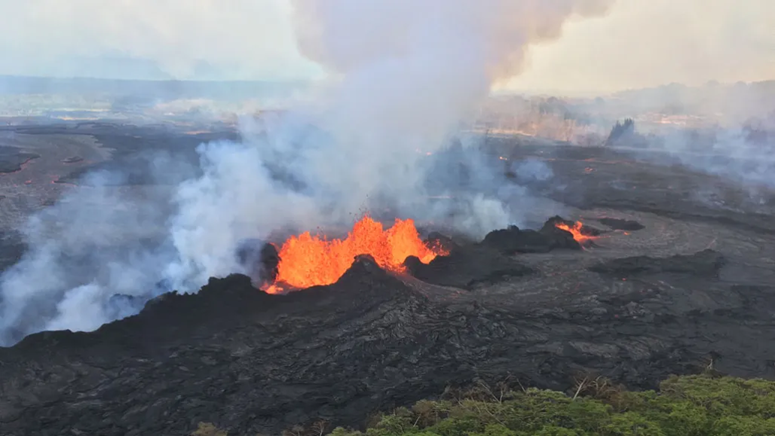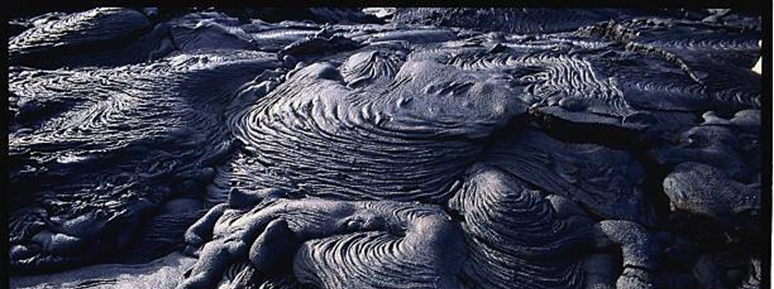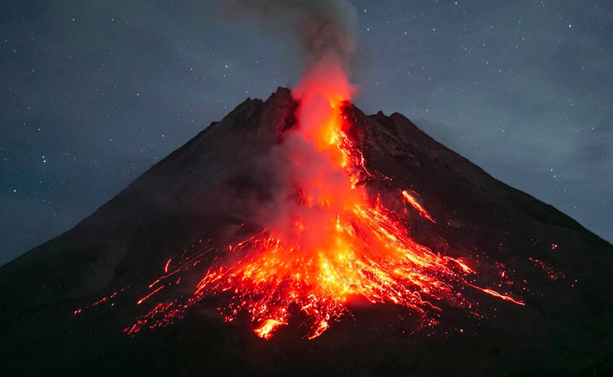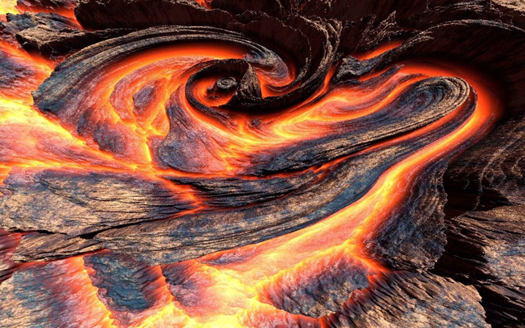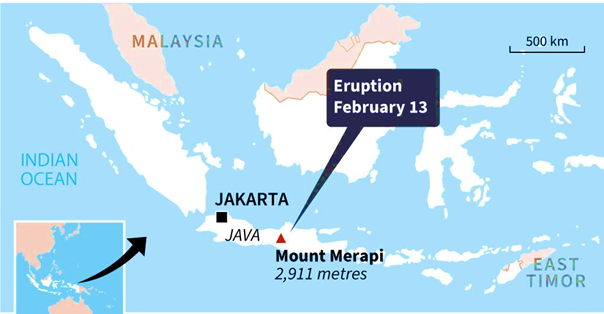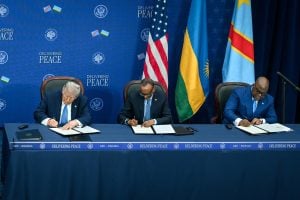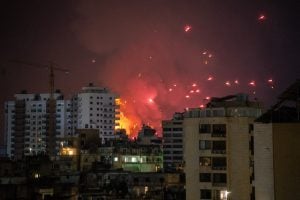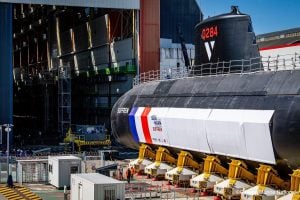In a devastating aftermath of torrential rain and volcanic activity, western Sumatra, Indonesia is reeling from the destruction of over 100 homes and buildings. Mount Marapi, known locally as the “Mountain of Fire,” unleashed a cascade of floods, mudslides, and cold lava, leading to a catastrophic disaster that has claimed over 40 lives, with many still missing.
Mount Marapi Cold Lava
Why In News
- In a devastating aftermath of torrential rain and volcanic activity, western Sumatra, Indonesia is reeling from the destruction of over 100 homes and buildings. Mount Marapi, known locally as the “Mountain of Fire,” unleashed a cascade of floods, mudslides, and cold lava, leading to a catastrophic disaster that has claimed over 40 lives, with many still missing.
- The disaster struck four districts near Mount Marapi’s base, triggered by heavy monsoon rains that overwhelmed river banks, transforming peaceful landscapes into treacherous torrents of cold lava and mud.
What Is Cold Lava
- Cold lava, or “lahar,” descended swiftly from Mount Marapi, akin to a lethal river of wet concrete, claiming everything in its path. The United States Geological Survey warns that cold lava can be more destructive than molten lava, burying and crushing everything it encounters with relentless force.
- Unlike the fiery rivers of molten lava that erupt during volcanic eruptions, cold lava is a blend of volcanic material, debris, and water that behaves more like a fast-moving landslide.
- This phenomenon occurs when water interacts with volcanic ash and debris on the slopes of a volcano, creating a dense mixture that flows downhill with surprising speed and destructive power.
- The term “cold lava” is somewhat misleading, as it suggests a substance that has cooled down like solidified lava. In reality, cold lava remains hot internally due to chemical reactions within the volcanic material, but its external appearance and behaviour are more akin to wet concrete.
- This flowing mass can travel far from the volcano’s summit, driven by gravity and the sheer volume of material displaced during an eruption or heavy rainfall.
- One of the defining characteristics of cold lava is its ability to pick up additional debris and sediment as it travels downhill. This mixture can rapidly increase in volume and destructive potential, transforming from a relatively innocuous flow into a powerful force capable of devastating everything in its path.
- The rapid speed and unpredictability of cold lava make it particularly dangerous to nearby communities, as it can overwhelm settlements and infrastructure with little warning.
- Studies by the United States Geological Survey (USGS) have highlighted the unique hazards posed by cold lava. Unlike traditional lava flows, which move slowly and give residents time to evacuate, cold lava can advance rapidly, burying or crushing anything in its way.
- Its high density and abrasive nature mean that it can cause significant damage to buildings, bridges, and roads, posing a serious threat to human life and property.
Why Is Mount Marapi Called The Mountain Of Fire
- Mount Marapi is among the most active of Indonesia’s 127 volcanoes.
- Marapi translates from the local Minang language as “Mountain of Fire”.
- It stands at 2,891 metres (9,485 feet) above sea level.
- It last erupted in December 2023 when a huge cloud of volcanic ash spread widely across the sky.
- 20th ASEAN-India Summit & 18th East Asia Summit Highlights
- Manipur Police Register Criminal Case Against Assam Rifles
- Pakistan’s Ex-PM Imran Khan Jailed For 3 Years In ‘Toshakhana Case’
- Four Years After Removal Of Art 370: How Is The Actual Situation In Kashmir?
- Putin’s Critic Alexei Navalny Sentenced To 19 More Years In Prison
- Delhi Services Bill Tabled In Lok Sabha: Govt Of NCT Of Delhi (Amendment) Act, 2023
- Gurugram Nuh Violence: How A Religious Procession Turned Into A Communal Clash
- Govt Imposes Import Restrictions On Laptops, Tablets, Computers
- How Climate Change Is Altering The Colour Of The Oceans?
- New IPCC Assessment Cycle Begins: Why Is It So Significant?
- Difference Between NATO Vs Russia? [Explained]
- Italy Regrets Joining China Belt & Road Initiative (BRI)
- What Is Doping: Why Is It Banned In Sports?
- India Tiger Census 2023: India Is Now Home To 75% Of Tigers In The World
- Military Coup In Niger – President Detained, All Institutions Suspended
- No-Confidence Motion Against PM Modi’s Government
- Elon Musk’s SpaceX Rocket Punches Hole In Ionosphere
- Israeli Parliament Passes Controversial Law Stripping Supreme Court Of Power
- Significance Of 1999 Kargil War: How It Became A Major Game Changer For Indian Military?
- Controversy Over Movie Oppenheimer Gita Scene: How Are Films Certified In India?
- The Curious Case Of Qin Gang: China’s Foreign Minister Who Went Missing
- Twitter’s Iconic Blue Bird Logo Set To Be Replaced By An X Logo
- India Pulls Out Of Games In China Over Stapled Visas For Arunachal Athletes
- PM Modi Urges Sri Lanka President To Implement 13th Amendment
- India Pulls Out Of Games In China Over Stapled Visas For Arunachal Athletes
- Rajasthan CM Sacks Minister After Remarks Over Crimes Against Rajasthan Women
- Manipur Sexual Assault: Video Sparks Outrage Across The Country
- BRICS Summit 2023 In August: Why Putin Won’t Go To South Africa For The Summit?
- Robert Oppenheimer: The Father Of Atomic Bomb, Impact Of Bhagavad Gita On Him
- Russia-Ukraine Black Sea Grain Deal, Why Russia Has Halted It?
- Henley Passport Index 2023, India Passport Ranked 80th
- Indian Opposition Parties Form ‘INDIA’ Alliance, 26 Parties Unite For 2024
- Britain Joins Asia-Pacific Trade Group ‘CPTPP’ – Biggest Trade Deal Since UK Left EU
- NITI Aayog Report On National Multidimensional Poverty Index
- PM Modi UAE Visit: Highlights & Key Takeaways
- PM Modi’s Visit To France: Highlights & Key Takeaways
- NATO Summit Vilnius 2023: Highlights & Key Takeaways
- Turkey Supports Sweden’s Bid For NATO Membership At Vilnius Summit 2023
- Why ISRO Wants To Explore The Moon’s South Pole: Chandrayaan-3 Mission
- Bengal’s Panchayat Polls Turned Violent: SSB Interview Topic 2023
- First Ever IIT Campus Outside India In Tanzania
- RBI’s Report On “Internationalisation Of Rupee” Why And What Are The Benefits?
- Japan To Release Nuclear Wastewater Into Ocean – Gets Approval From IAEA
- PM Modi Chairs 23rd SCO Summit: Highlights & Key Takeaways
- Israel Raids Jenin Camp: Massive Military Operation In West Bank
- Dutch King Apologizes For Netherlands’ Role In Slavery: A Look At The Dutch Role In History
- Constitutional Crisis In Tamil Nadu: The Tussle Between Governor & DMK Government
- Why Has France Been Engulfed By Protests Again?
- Paris Summit – World Leaders Unite For A New Global Financing Pact
- India Ranked 67th On Energy Transition Index – Sweden On Top Of List By World Economic Forum
- Four Minor Planets Named After Indian Scientists
- NASA Recovers 98% Water From Urine & Sweat On ISS: Breakthrough In Long Space Missions
- ESA Space Telescope Euclid Is All Set For Launch To Observe Dark Side Of Universe
- PM Modi’s Trip To USA: Key Takeaways & Highlights
- PM Modi-Led Yoga Session Creates A New Guinness World Record
- Sajid Mir, The Mastermind Behind 26/11 – His Designation As Global Terrorist Blocked By China
- UN Adopts First Historic ‘High Seas Treaty’ To Protect Marine Life
- International Yoga Day 2023 – How It Was Celebrated Across The World?
- Gender Apartheid – Why Is Afghanistan At Stand Off With UN?
- Gandhi Peace Prize 2021 For Gita Press Why It Triggered A Congress-BJP Brawl?
- The New Pride Flag – Why The Change & What The Colours Signify?
- 48 Years Of Emergency – PM Modi Refers It As India’s Darkest Period In Mann Ki Baat
- Groundwater Extraction Has Tilted Earth’s Spin – How Will It Impact The Climate Change?
- Europe’s Worst Migrant Boat Disaster – 78 Dead, Hundreds Missing Off Greek Coast
- MOVEit Global Hacking Attack – Government Agencies In The USA Targeted
- Karnataka Govt Decides To Repeal Anti-Conversion Law: Why Was The Law Controversial?

